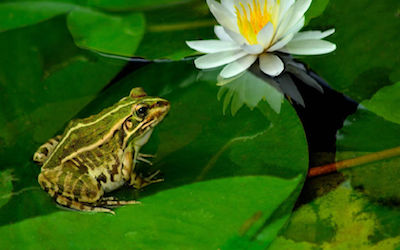PTE考生目前最大的问题之一就是练习题缺乏。除了有限的基本官方书(PLUS,Testbuilder, OG)之外就没有题了。很多英语基础不是很扎实的同学很难找到练习材料。悉尼文波雅思PTE培训学校专门为澳洲,尤其是悉尼、墨尔本的PTE考生准备了适合PTE听力阅读练习的科学60秒。各位PTE同学可以练习PTE听力中的summarise spoken text和PTE口语中的retell lecture,PTE听力口语-科学60秒-Frosty Moss练习记笔记技巧和复述。废话少说,下面开始:
听力内容:
60秒科学节目(SSS)是科学美国人网站的一套广播栏目,英文名称:Scientific American – 60 Second Science,节目内容以科学报道为主,节目仅一分钟的时间,主要对当今的科学技术新发展作以简明、通俗的介绍,对于科学的发展如何影响人们的生活环境、健康状况及科学技术,提供了大量简明易懂的阐释。
This is Scientific American — 60-Second Science. I’m Christopher Intagliata.
You might think frogs catch insects ’cause their tongues are sticky. “But why is the tongue sticky, and how does it actually adhere to these insects at these very high accelerations?”
Those are the questions Alexis Noel, a PhD candidate in mechanical engineering at Georgia Tech, wanted to answer. So she and her team got frog tongues from a dissection lab, and tested their consistency. Ten times softer than human tongues. A texture more like brain tissue. “Their tongue is very much like a sponge. It’s infused with this thick, viscous saliva.”
That saliva was their next study subject. “And in order to test the saliva we had to get about a fifth of a teaspoon of fluid. Which is a lot of saliva, in a frog’s case.” They put the saliva in a rheometer, a tool that can measure viscosity. And they found that frog saliva is what’s called a ‘shear-thinning fluid’—its viscosity changes, depending on conditions.
You might be more familiar with a different shear-thinning fluid. “Ketchup. When you smack the bottom of the ketchup bottle you’re actually invoking shear forces within the ketchup itself. And ketchup, because it’s shear thinning, its viscosity actually drops and allows it to slide out of the bottle easily.”
So back to our frogs: the tongue shoots out, hits the bug and deforms around it. That impact is like a smack on a ketchup bottle—it changes the saliva from thick and sticky to more watery, free to flow all over the bug. Then the tongue bounces back, like a bungee cord, and the saliva thickens up again. What’s next is beyond weird.
“Frogs actually take their bulbous eyeballs and bring them down into their mouth cavity and use their eyeballs to shove the insect down the throat.” That force turns the saliva watery again, “and the insect slides down the gullet.” The study is in the Journal of the Royal Society Interface.
With the case closed on this one, Noel’s next inquiries are on grippy fingertips. The dust-collecting properties of earwax. And—wait for it—cat tongues. “Yeah, I get paid to watch cat videos all day.”
Thanks for listening for Scientific American — 60-Second Science Science. I’m Christopher Intagliata.
墨尔本悉尼文波PTE原创首发
更多精彩请持续关注微信wenbo_tv3。





